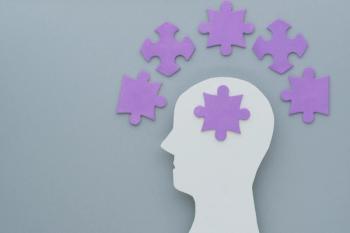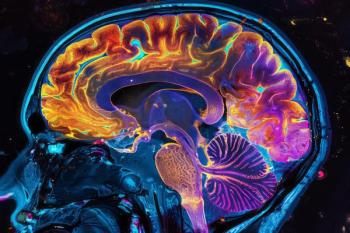
- Psychiatric Times Vol 30 No 4
- Volume 30
- Issue 4
Five Key Fantasies Embraced by DSM
I envision the day when psychiatry and psychology re-embrace the mind, along with the brain and behavior.
While the diagnostic categories of DSM-III and DSM-IV (and soon DSM-5) have provided the basis for much useful research, little has been written about how much of DSM-and how much “evidence-based medicine”-is built on a foundation of fantasy. DSM itself, unfortunately, does not acknowledge the existence or importance of fantasy. If it did, it would be a much more scientifically based, useful resource. An exploration of some central DSM fantasies will help point out some of its limitations.
DSM embraces several key fantasies that form the basis for psychiatric teaching. Some of the most significant are the following:
• DSM categories correspond well to people in the real world
• Diagnosis can (and should) be made only on the basis of observable behavior
• Classification within a category implies a difference from other categories and meaningful commonality with other components of the same category
That the mind of the patient, which cannot be objectively observed or measured, can be clinically and scientifically ignored is a central fantasy underlying all of this. Thus, although vast amounts of research have been dedicated to DSM, elements of fantasy inevitably remain. Case vignettes will help illustrate some of the principal fantasies.
Fantasy 1: DSM categories correspond with people in the real world
To a certain extent, this is not a fantasy. It is important to note that there really are people who have psychiatric disorders (eg, depression, borderline personality disorder, bipolar disorder, schizophrenia) and for whom these descriptive diagnoses are compelling and significant. But just as with the individual human mind, the presence of aspects of reality frequently serves to obscure aspects of fantasy-in this case, DSM categories are useful for most or all patients. How many patients outside of research studies fit neatly into DSM categories?
Does it really make sense to squeeze people into DSM categories in which they don’t fit? Does it make sense to say that all people who fit into multiple categories have “comorbidities,” or would it be better to acknowledge that many people have complex pictures that defy DSM categories? What of the many people whose difficulties bear little or no resemblance to any DSM category? Why maintain the fantasy of the utility of DSM in these instances? To illustrate the difficulty, here are 3 typical examples of patients that DSM seems to ignore.
DSM does not correspond with these patients-but the fantasy that DSM applies to most patients in the real world continues to be broadly shared, as does the fantasy that we can ignore patients’ fantasy lives. Just as with our patients’ fantasies, our professional fantasies must be meaningful, there for a reason. These DSM fantasies help alleviate anxiety about complexity. They allow us to think that there are simple solutions, even when we are dealing with people. The vignettes above also alert us to the next DSM fantasy.
CASE VIGNETTE
Mr A came into treatment when his brother, with whom he had been living for 3 months, pointed out to him that contrary to his stated intent, he was not actually looking for a job. Over several sessions, Mr A proved to be a capable, skilled worker, as long as he was in a structured environment and had a boss he respected. Brutally murderous dreams suggested that outside of this circumstance, Mr A nearly paralyzed himself in an effort to control tremendous rage following a very difficult, traumatic childhood that he otherwise casually ignored.
What does DSM offer to help us understand or categorize Mr A’s blithe acceptance of his inertia? Where is the code for “paralyzes self to control murderous rage and wishes?” Despite its absence from DSM, might it not be the most precise and therapeutically salient diagnosis?
********************************************************************************************************************
Dr B works in a highly technical, high-risk area of medicine. She came for evaluation, wondering whether she suffered from “burnout” or depression, thinking maybe she should retire from practice. Her mood was low, but she had few other symptoms of depression. She was preoccupied with the idea that she had hurt patients and mentioned that she began each day by mentally replaying, in sequence, every case of her career in which she felt she had hurt someone. She justified this ritual with the idea that it helped prevent recurrent errors, despite the fact that she’d been over each case hundreds of times and there was nothing left to learn. Further exploration revealed that she had not in fact hurt these patients; they were people whose terrible illnesses had led to unfortunate outcomes that Dr B had been unable to prevent. Dr B gradually began to admit that contrary to the way she treated herself as a near criminally negligent physician, she was at the peak of her career, and her colleagues routinely consulted her on, or referred to her, their most difficult cases.
I let Dr B know that I understood why she wondered about burnout and depression, but that it seemed to me that if we needed a label, we should say that she was suffering from a guilt disorder. I also pointed out to her how she started each day with penance to try, unsuccessfully, to relieve the guilt, and that her guilty self-accusations had nothing to do with reality. In all the cases she had mentioned, she hadn’t actually hurt anyone, so the guilt, while felt in relation to her work, must have its origins elsewhere.
She later told me that she couldn’t believe she hadn’t recognized the guilt herself, and that she felt so light after our initial discussion that she laughed out loud while walking down the street back to work. Work became much less of a burden for her, and she went on to do a lot more therapeutic work easing guilty punishments and restrictions from many parts of her life. Guilty self-punishment and self-restriction can destroy a person’s life, but it is not in DSM. What happens to such patients if they must be treated according to DSM diagnoses?
********************************************************************************************************************
Mr C came to treatment after yet another crushing disappointment in a romantic relationship. He did not have overt symptoms of depression or anxiety. Briefly, it turned out that a seductive mother and parental divorce had left him with amplified incestuous feelings, wishes, and fantasies that led him to withdraw from intimate relationships.
Again, there is no DSM diagnostic code for this situation, although variations of it are extremely common.
Fantasy 2: Diagnosis can and should be based on observable behavior
What supports this fantasy that we can limit ourselves to observable behavior? In none of the patients described here can a diagnosis be made without also accounting for the customary, crucial, emotional conflicts in the mind. That one can limit attention to behavior and ignore the complexity of the human mind and call it science, or that one can toss away most of the evidence and call it “evidence-based-these are fantasies. Obviously, the internal conflicts of the patients described here may be difficult to categorize and measure. But what we need is more sophisticated science that accounts for the mind, not an unscientific attempt to dismiss much of our best data.
Perhaps in addition to facilitating a circumscribed form of science, “behavior only” fantasy helps us defend against the messiness and discomfort of many of our feelings and fantasies, as we would expect from working with our patients.
Beyond this foundational fantasy underlying our current DSM-that we can manage with only observable behavior-let’s consider a number of what we might call corollary fantasies.
Fantasy 3: DSM categories are meaningfully separate
Much research has established that many DSM categories are indeed discrete and useful, but again, this should not lead the student or reader to unquestioningly accept that this is always the case. As noted, many patients in the real world do not read the textbooks and confine themselves to our given categories. The fact that anxiety and depressive symptoms occur simultaneously has recently become a widely recognized limitation of DSM. The concept of “comorbidity,” the idea of having diagnoses from 2 categories at once, has merit on the one hand, but on the other is an attempt to bolster an inadequate system. By analogy to color, is the pattern better understood as blue and yellow, or as green, stripes, a check, or a complex multicolored plaid?
Beyond its limited utility, what propels the fantasy of separateness? To me, it always seems like another compulsive symptom: Don’t let the peas touch the potatoes! Do we professionals tend to be compulsive? Of course!
Fantasy 4: A DSM category represents a homogeneous entity
Mr D and Mr E-both of whom received a diagnosis of DSM unipolar depression-are often assumed to have the same psychiatric disorder. Mr D, who had narcissistic features, became depressed in his 40s, because his professional accomplishments had fallen short of his grand expectations and his relationships had proved unrewarding. Mr E, after spending 2 years valiantly caring for his dying parents, became depressed after they died. His parents’ illnesses had revived his well-earned, usually suppressed, childhood wishes to murder them. No longer serving penance of endlessly caring for them, he could not tolerate his now conscious joy and relief at their deaths, and he became deeply, guiltily depressed.
To what extent is it therapeutically useful to consider that these men had the same psychiatric disorder? Does using the vague DSM term “affective disorder” offer an apparent explanation that takes attention away from significant affects, such as anger, anxiety, guilt, and sadness?
One might ask similar questions in relation to Ms F, Ms G, and Ms H, all of whom have anxiety and, not meeting criteria for any of the DSM discrete anxiety diagnoses, would be said to have anxiety disorder NOS (not otherwise specified). Ms F had anxiety with separations and with the possibility of more independence from her mother; Ms G had become anxious over peripartum struggles with intolerable anger directed toward her baby; and Ms H, who had been sexually abused as a child, became anxious whenever a man expressed interest in her.
In all of these cases, DSM treats different entities as the same, offering a rather nonspecific diagnosis and ignoring the possibility of a more specific (and potentially useful) dynamic diagnosis. In these examples, DSM, if taken seriously, inhibits useful thought about treatment instead of promoting it.
What supports the fantasy that these different patients should be given the same diagnosis? Again, I think this fantasy helps decrease anxiety about the complexity of human feelings and conflicts. It offers a relieving feeling of simplicity.
Fantasy 5: A diagnosis can be made at the beginning of the treatment
When DSM-III came out in the 1980s, I recall a senior psychiatrist who found it a source of great amusement: “They want the diagnosis at the beginning!” He would struggle to say this through his laughter, adding that one only really understood the diagnosis-the underlying pathological structures and fantasies-late in the treatment. Obviously, in many situations, it is essential to make a provisional diagnosis promptly, but it is worth remembering how limited this initial impression can be and how much situations can change and evolve. Anxiety symptoms may arise in depressed patients as their depression lifts. Anxiety can cover sadness and depression. This fantasy is encouraged by our wishes for professional omniscience, in addition to being supported by many of the same reasons as the fantasies that precede it.
Conclusion: My DSM fantasy
I envision the day when psychiatry and psychology re-embrace the mind, along with the brain and behavior. Then, diagnosis will routinely and comprehensively include descriptive, developmental, and dynamic mental and behavioral features of patients. Neurosis, or some way of conceptualizing mental conflicts, will return to DSM. The absence of such a concept will no longer result in the unfortunate in-attention to patients’ dynamics that the recent DSMs tend to foster. Descriptive and dynamic psychiatry will ride off together into the sun-set, even as clichs vanish from my writing.
Articles in this issue
over 12 years ago
Shared Decision Making in the Treatment of Psychosisover 12 years ago
Treating Comorbid Psychiatric and Substance Use Disordersover 12 years ago
Lamotrigine for Major Depressive Disorder Is Inappropriateover 12 years ago
Letter to a Foreign Psychiatristover 12 years ago
Psychosocial Assessment and Treatment of Bariatric Patientsover 12 years ago
Antidepressants and Pregnancyover 12 years ago
Assessing Violence Risk: A Meteorological AnalogyNewsletter
Receive trusted psychiatric news, expert analysis, and clinical insights — subscribe today to support your practice and your patients.




